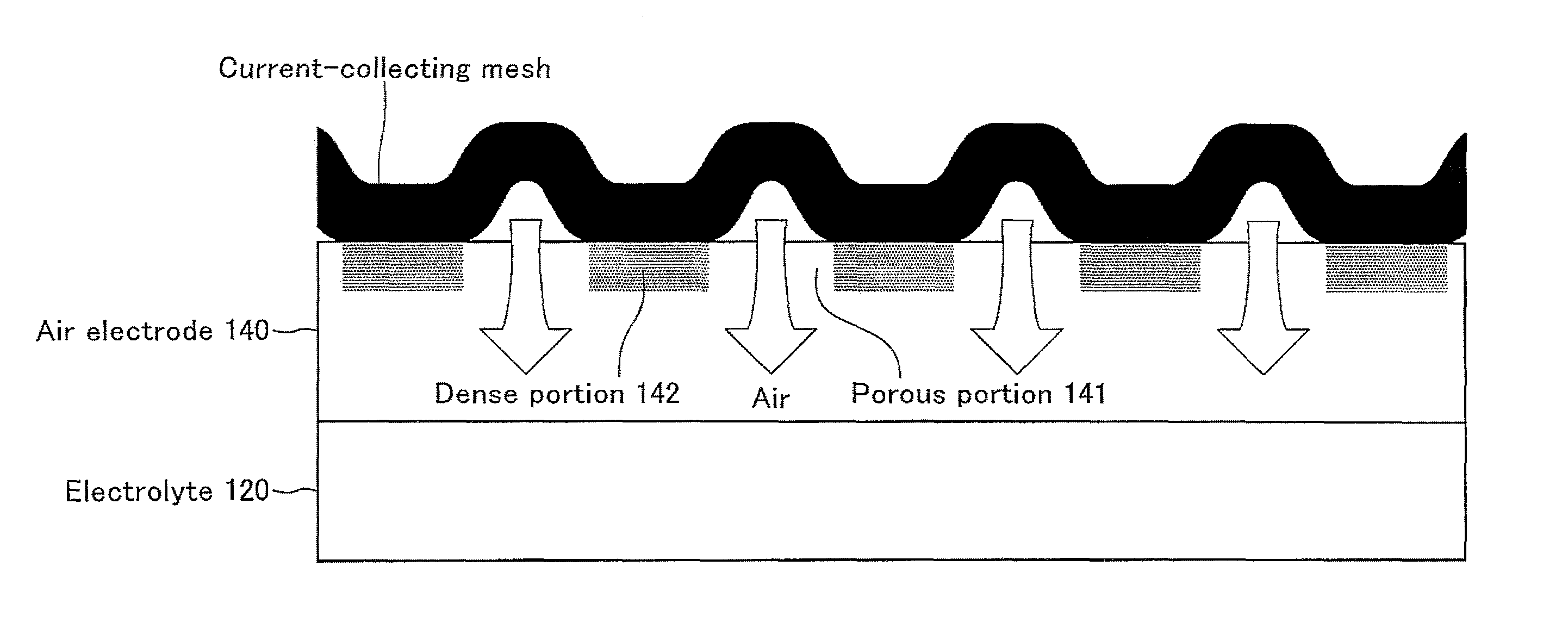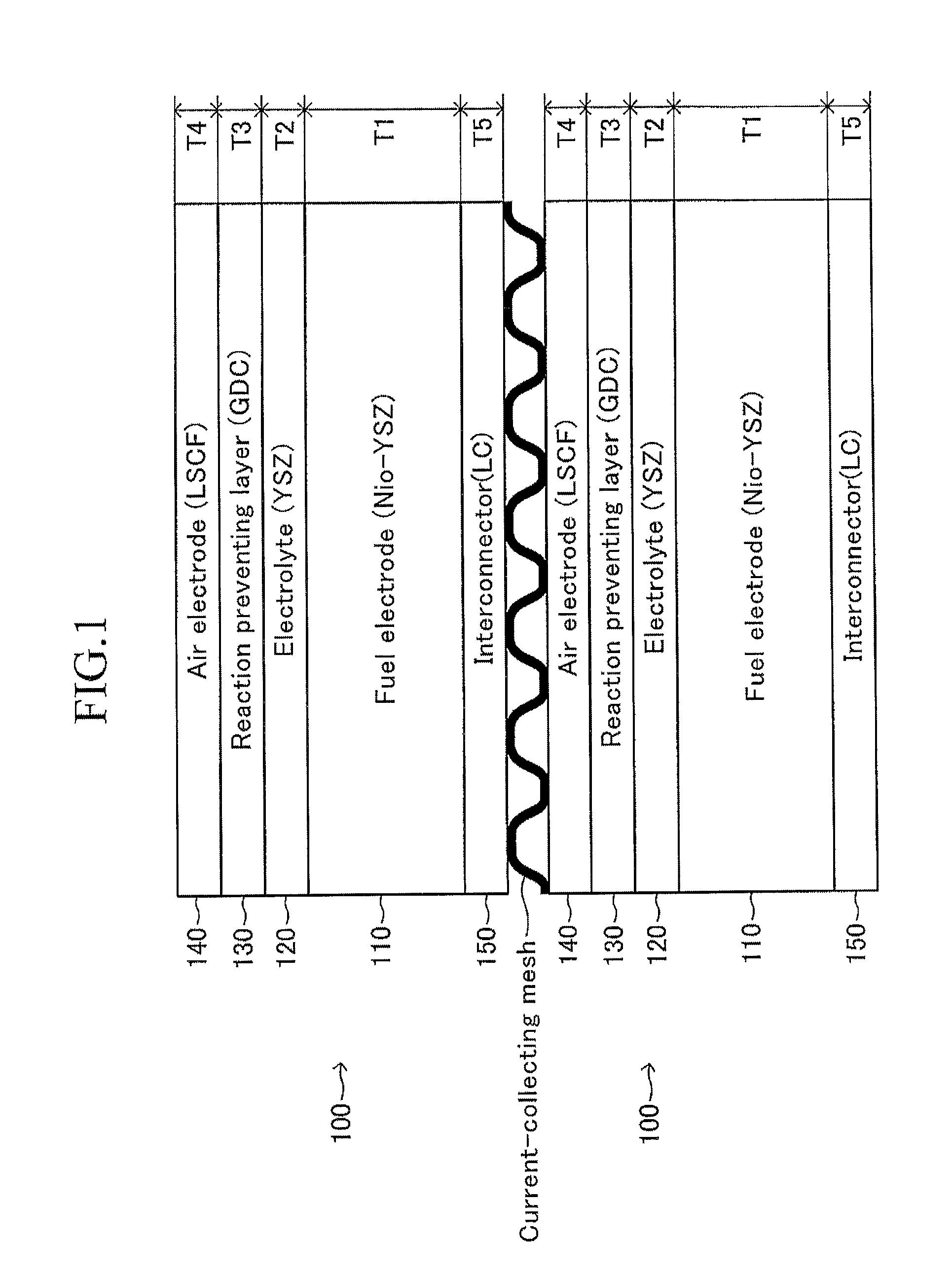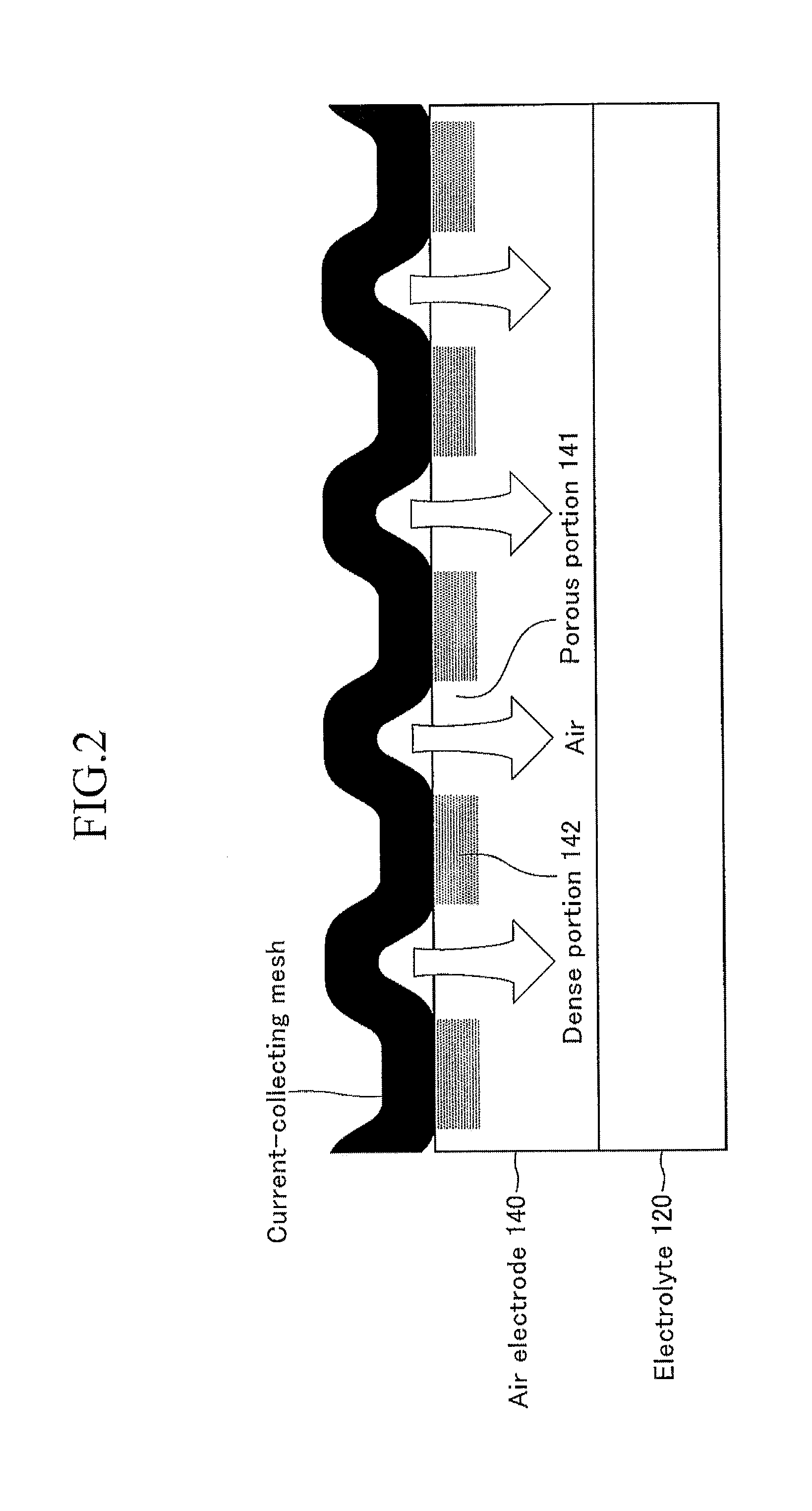Solid oxide fuel cell including electrode containing dense bonding portions and porous non-bonding portions
a solid oxide fuel cell and dense bonding technology, applied in the direction of cell components, final product manufacturing, sustainable manufacturing/processing, etc., can solve the problems of electrode and enhancement difficulties, and achieve the effect of reducing reaction resistance and increasing output of so
- Summary
- Abstract
- Description
- Claims
- Application Information
AI Technical Summary
Benefits of technology
Problems solved by technology
Method used
Image
Examples
Embodiment Construction
(Structure)
[0018]FIG. 1 illustrates one example of an SOFC according to an embodiment of the present invention. In FIG. 1, two SOFC cells 100 and 100 are electrically connected in series through a current-collecting mesh. Each SOFC cell 100 will firstly be described below.
[0019]The SOFC cell 100 is a stacked body including a fuel electrode 110, a solid electrolyte film 120 stacked on the fuel electrode 110, a reaction preventing layer 130 stacked on the solid electrolyte film 120, an air electrode 140 stacked on the reaction preventing layer 130, and an interconnector 150 stacked below the fuel electrode 110. The shape of the cell 100 viewed from the top is, for example, a square having a side of 1 to 30 cm, a rectangle having a long side of 5 to 30 cm and a short side of 3 to 15 cm, or a circle having a diameter of 1 to 30 cm. The thickness of the cell 100 is 0.1 to 3 mm.
[0020]The fuel electrode 110 (anode electrode) is, for example, a sheet-type porous sintered body composed of ni...
PUM
| Property | Measurement | Unit |
|---|---|---|
| porosity | aaaaa | aaaaa |
| porosity | aaaaa | aaaaa |
| porosity | aaaaa | aaaaa |
Abstract
Description
Claims
Application Information
 Login to View More
Login to View More - R&D
- Intellectual Property
- Life Sciences
- Materials
- Tech Scout
- Unparalleled Data Quality
- Higher Quality Content
- 60% Fewer Hallucinations
Browse by: Latest US Patents, China's latest patents, Technical Efficacy Thesaurus, Application Domain, Technology Topic, Popular Technical Reports.
© 2025 PatSnap. All rights reserved.Legal|Privacy policy|Modern Slavery Act Transparency Statement|Sitemap|About US| Contact US: help@patsnap.com



